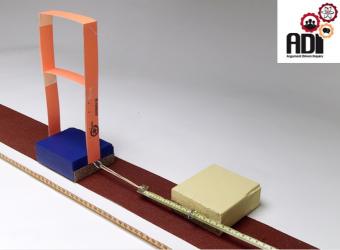
Students work in small groups to use a physical model, the earthquake machine, to examine the occurrence of earthquakes and the inputs and outputs of fault systems. Their task is to design and carry out an investigation(s) to explore the three elements of earthquake prediction (When?, Where?, How Big?) and the challenges to making such predictions. Following a Argument-Driven Inquiry (ADI) instructional approach students analyze data collected through their investigation and collectively develop a tentative argument to address the guiding questions. Their claim, evidence and justification are sketched out on whiteboards for a class “poster session”. Following this, a teacher led discussion of their investigations and resulting data helps students to connect their investigations to broader Earth science concepts and ensures core content is addressed. The instruction is wrapped up through an individual writing assignment and double-blind peer review process.
Students will be able to:

Animation shows the buildup of stress along the margin of two stuck plates that are trying to slide past one another. Stress and strain increase along the contact until the friction is overcome and rock breaks.

Graphing time vs. distance using the classic block-and-sandpaper "earthquake machine"

Graphing time vs. strain using the classic block-and-sandpaper "earthquake machine"
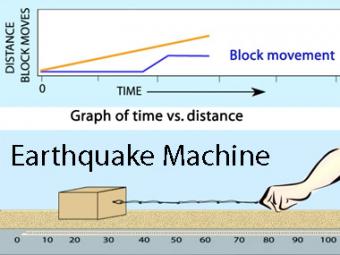
Animation of the single-block "Earthquake Machine", a mechanical model of the earthquake process using a wood block, sandpaper, and rubber bands. This model shows how "Forces, Faults, and Friction" interact as elastic energy is slowly stored when the rubber back stretches and then is rapidly released as the block jerks during an "earthquake".
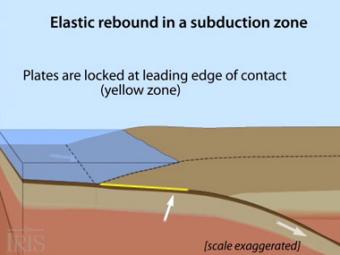
Oblique view of a highly generalized animation of a subduction zone where an oceanic plate is subducting beneath a continental plate. (See sketch below for parts.) This scenario can happen repeatedly on a 100-500 year cycle. The process which produces a mega-thrust earthquake would generate a tsunami, not depicted here.

This demonstration shows that rocks are elastic by squeezing a slit core of rock.
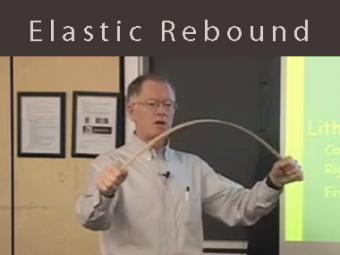
Video lecture about elastic rebound and brittle material in the crust using a yardstick as a mechanical analog. This demonstrates elasticity, brittle fracture, and why it is difficult to predict earthquakes.

This demonstration shows that rocks are elastic by squeezing a slit core of rock.

THE two-block "Earthquake Machine" uses two blocks with different grit sandpaper to model interactions between adjacent patches along a fault.
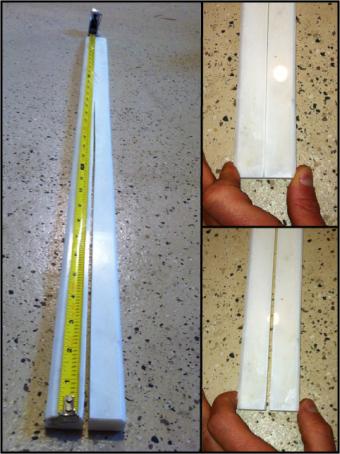
Through a demonstration lead by the teacher, the discrepant concept of rocks exhibiting elastic behavior is physically illustrated with an easily obtained, inexpensive model.
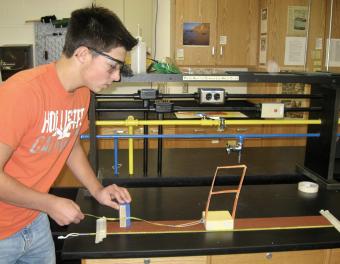
Using a block-and-sandpaper model, students collaborate in small groups to investigate how energy is stored elastically in rocks and released suddenly as an earthquake (the earthquake cycle). This activity emphasizes the role of mechanical models in understanding and testing ideas in science.
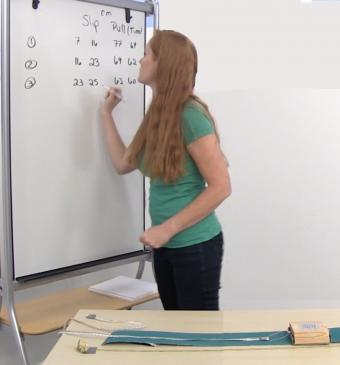
In this activity students use a mechanical fault model to collect empirical data, develop logical arguments about earthquake re-occurrence, and skeptically review other groups arguments.
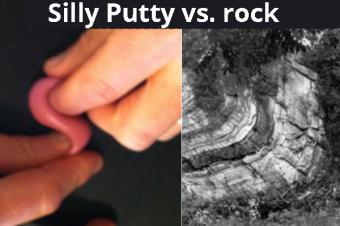
Using Silly Putty™ as an analogy, this activity extends student understanding of the deformation a rock undergoes as a result of stress, plus several factors that contribute to the behavior.